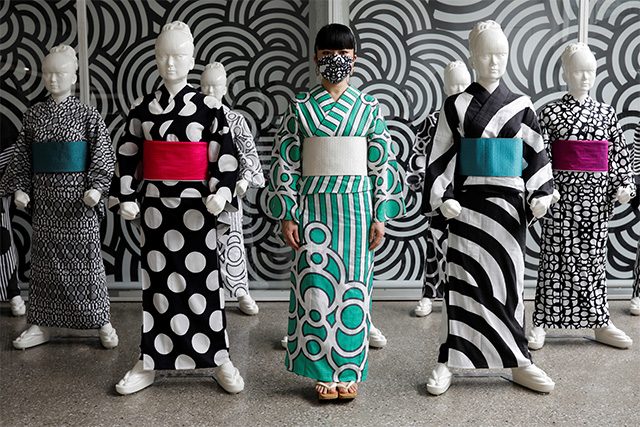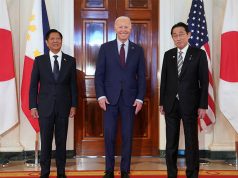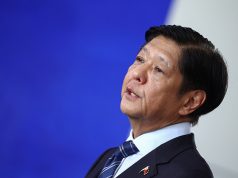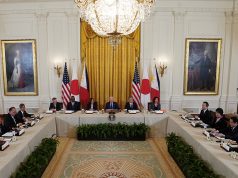
TOKYO — Japanese artist Hiroko Takahashi fought through sexism and suspicion from traditional kimono artisans to establish a globally known brand that sold hundreds of her original garments every month – until the coronavirus devastation hit.
Takahashi has tried to regroup by selling handmade masks sewn from kimono fabric.
“My designs are kind of strong, so there are people who resist the idea of wearing them in something full body,” the 42-year-old said. “But they’d love to wear it as a mask.”
But the masks are a long fall from her original business. Noted for her bold, unisex prints for both kimono and yukata, a lighter kimono, and her refusal to accept conventional limits on wearing them, Takahashi this year was part of an exhibit at London’s Victoria and Albert Museum. She also has a contract to provide yukata for a new, luxury hotel as Japan gears up to host the Olympics.
Success took time. When she began, traditional dyers hated her designs and refused to work with her. When she called to check on progress, they’d hang up.
“Being a woman and young can make it hard to work in Japan,” she said.
She persisted until she was selling 100 to 200 made-to-order yukata a month – remarkable success in an industry so steadily declining that sales now hover around 16 percent of what they were in 1981, according to government data.
The coronavirus changed everything. Department stores shut for weeks, the Olympics were postponed until 2021 and the hotel opening was put off. Summer festivals and fireworks displays, usually prime yukata-wearing occasions, were cancelled nationwide.
“We have absolutely nothing,” she said. “I’ve done nothing new this year. No new designs, no new colours.”
Though Takahashi is teaching and eking out income making kimono fabric masks, her income has taken a major hit. Her yukatas started at 60,000 yen ($566) and kimono at 3 million yen, but the masks go for just 1,400 yen each.
The coronavirus could devastate the kimono industry, where aging artisans, each specializing in one stage of the process, are finding it impossible to envision future work.
“There are a lot of people who expected to hang in there, but with the virus, and not enough work coming in, they’re deciding to call it quits,” said Kazumi Furuoya, 44, a third-generation kimono tailor who works with his wife and parents in the Den-en-chofu area of Tokyo.
A generation ago, the Furuoya workshop was so busy it scrambled to keep up with orders.
A recent survey by Aeru, a company promoting traditional crafts, found that unless demand improves, about 40 percent of artisans may be forced to quit by the end of the year.
“If a fabric-maker goes under there’s nothing to dye, and if the dyers quit we can’t make kimonos,” Takahashi said. “If one goes down, we all do.”
Even if demand picks up, the impact may be lasting. A lack of orders means new tailors can’t practice enough.
“Kimonos are part of Japanese culture and as long as even one artisan remains, I want to work with them to keep things going – because once something vanishes, bringing it back is really hard,” Takahashi said.
“I don’t know how much strength I have, but if I can contribute even a little to this, it’ll be good.” ($1 = 106.0300 yen) —Reporting by Elaine Lies. Editing by Gerry Doyle









